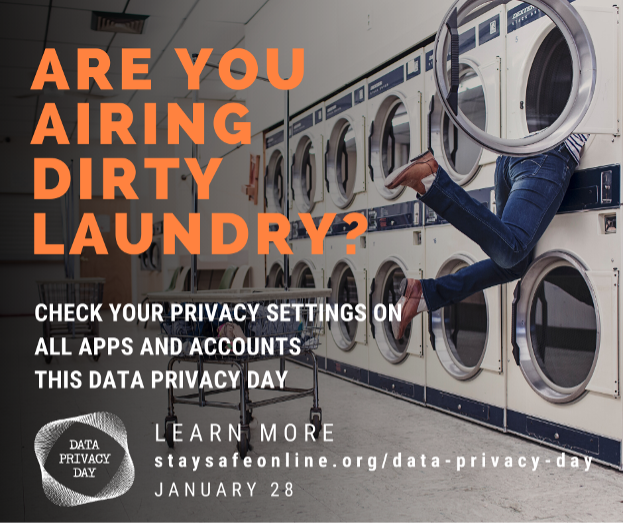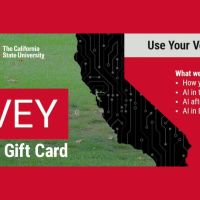Data Privacy 2022

Data Privacy Day began in the United States and Canada in January 2008 as an extension of Data Protection Day in Europe. Data Protection Day commemorates the Jan. 28, 1981, signing of Convention 108, the first legally binding international treaty dealing with privacy and data protection.
Data Privacy Day helps spread awareness about online privacy and educates citizens on how to manage their personal information and keep it secure. Data Privacy Day also encourages businesses to respect data and be more transparent about how they collect and use customer data. To promote these goals, the National Cybersecurity Alliance (NCA) has recommendations and tools to assist in protecting and preserving privacy: https://staysafeonline.org/data-privacy-week/.
FOR INDIVIDUALS: KEEP IT PRIVATE
Follow these steps to better manage your personal information and make informed decisions about who receives your data:
Step One - Understand the privacy/convenience tradeoff
Many accounts ask for access to personal information, such as your geographic location, contacts list, and photo album, before you even use their services. This personal information has tremendous value to businesses and allows some to even offer you their services at little to no cost.
Make informed decisions about whether or not to share your data with certain businesses by considering the amount of personal information they are requesting, and weighing it against the benefits you may receive in return. Be thoughtful about who gets that information and wary of apps or services that require access to information that is not required or relevant for the services they are offering. Delete unused apps on your internet-connected devices and keep others secure by performing updates.
Step Two – Manage your privacy
Once you have decided to use an app or set up a new account, check the privacy and security settings on web services and apps and set them to your comfort level for information sharing. Each device, application, or browser you use will have different features to limit how and with whom you share information. Get started with NCA’s Manage Your Privacy Settings page at https://staysafeonline.org/stay-safe-online/managing-your-privacy/manage-privacy-settings/ to check the settings of social media accounts, retail stores, apps, and more.
Step Three - Protect your data
Data privacy and data security go hand in hand. Keep your data secure by creating long unique passwords and storing them in a password manager. Add another layer of security by enabling multi-factor authentication (MFA) wherever possible, especially on accounts with sensitive information. MFA has been found to block 99.9% of automated attacks when enabled and can ensure your data is protected, even in the event of a data breach.
FOR ORGANIZATIONS: RESPECT PRIVACY
According to the Pew Research Center, 79% of U.S. adults report being concerned about the way their data is being used by companies. Respecting consumers’ privacy is a smart strategy for inspiring trust and enhancing reputation and growth in your business.
SF State communicates clearly and concisely to the public about what privacy means to our organization: see our Privacy Policy at https://its.sfsu.edu/privacynotice. Employees should take a few minutes to review the Privacy Policy and become familiar with SF State’s approach and commitment to protecting personal information.


